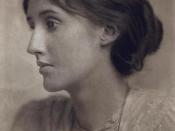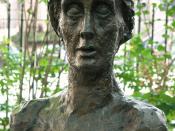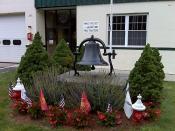To the Lighthouse, published in 1927 is one of Virginia Woolf's most successful novels written in a stream of consciousness style. The novel is divided into three parts, which revolve around the members of the Ramsey family and their guests during visits to their summer vacationing residence on the Isle of Skye. The central preoccupation within the novel however is not to be found within the lives of the characters, instead they are seen as being secondary to the overall grounding of the novel in the house itself. Woolf examines the actions of the characters and the passing of time from the perspective of the central symbol of the actual physical domestic space of the house.
The characterization of Mrs. Ramsey, who is identified as being the guardian, or the 'angel of the house', cannot be separated from the actual physical space itself. Just as the walls and doors of the house serve to keep out and protect the inhabitants from the outside world, Mrs.
Ramsey works to create a domestic space where she can shield the people from the effects of modern life and offer a retreat into a more natural landscape. This natural landscape however can be seen as a threat, the pounding of the waves on the surf turns from a "soothing tattoo to her thoughts" to the "ghostly roll of drums remorselessly beat(ing) the measure of life", and terrified the sound makes her think "of the destruction of the island and its engulfment in the sea"(23-24). The simple fact that sound of the pounding waves comes to her suddenly, whereas before it had been concealed by the sounds of conversations being held outside, points to the hollowness of the house.
Mrs. Ramsey works to maintain the house as being a protective barrier, which can...


